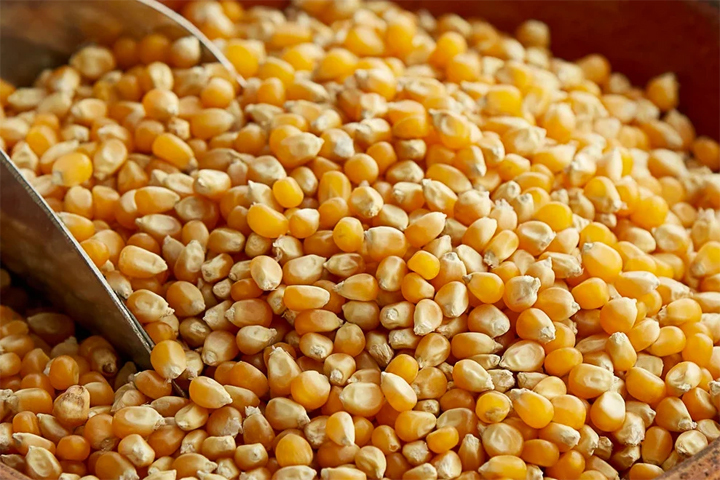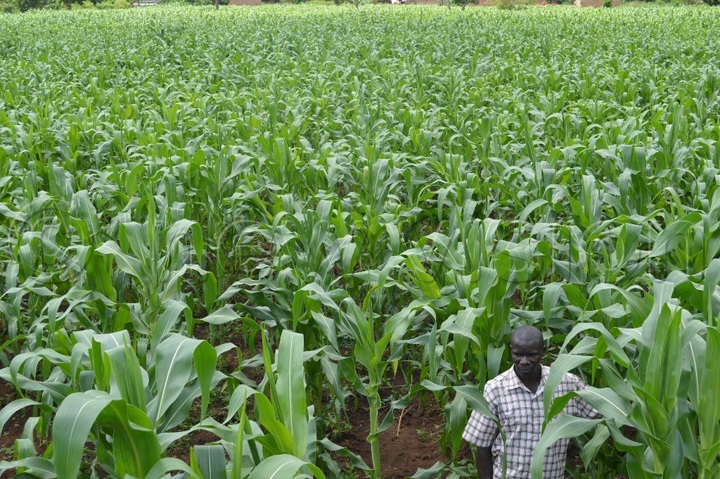Growing popcorn maize brings in good money
Popcorn has taken Uganda’s market by storm, with school-going children as the first beneficiaries
It is lunchtime in Kamuli town in Kamuli district when pupils from different primary schools around town start trickling at the busy popcorn stall on Vithaldas Road, jostling to buy.
Owing to the big turnout, the seller regulates the young customers by lining them up, to give the weak ones access to the product with minimal struggle.
The buyers, including adults, happily walk back to their respective schools munching the exploded kennels, suppressing the pangs of hunger.
The availability of popcorn in towns other than growing trading centers across the country has been attributed to modern technologies, which has enabled entrepreneurs to tap the popcorn business.
Charles Naaya, the agricultural officer for Butansi Sub County in Kamuli district, says innovations like the fabricated popcorn roasting machines, powered by electricity and charcoal, have empowered the communities and helped children to stay in school.
"With the machines in the urbanization and rural growing centers, popcorn business is thriving. Thanks to the innovations," Naaya said, during an interaction with Harvest Money, on Thursday.
Popularly known as "Katulika" (bursting maize) in Busoga, popcorn is the product of the maize variety with small-pointed, white, black, and yellow grains.
When socked in cooking oil and saturated with salt, the seeds, during the frying, burst and expose the whitish color, birthing the tasty product.
The machine, whose body sides are covered with glass is mounted with a small "source pan" in the middle, when heated, sends the seeds bursting. The product, after cooling, is packed in buveera and larger bags before distribution to markets.
Taking Uganda by storm
Popcorn has taken Uganda's market by storm, with school-going children as the first beneficiaries, being cheap with packets costing sh200 and sh500.

Small scale investors have positioned popcorn rosters near schools and growing trading centers, targeting toddlers, pupils, students, and adults. While large supermarkets have not been left out.
According to Justine Birabwa, the In-charge of Nawandyo Health Centre 11 in Bugulumbya Sub County, Kamuli district, popcorn, which children top with water sustains their livelihoods and diet.
Not only children, but even adults consume it at leisure as an "escort" to breakfast tea, and soft drinks.
Demand for popcorn grain
The escalated popcorn market has attracted demand for popcorn. Unfortunately, there are no clear figures of production, demand, and supply of popcorn, since it is classified as maize, however, given the number of roasting machines in each trading centre, demand is obviously high. Charles Naaya, the Agricultural officer for Butansi Sub County in Kamuli district told Harvest Money that owing to the increased popcorn demand, strategic and wise farmers are shifting to popcorn.
"With 95% growing ordinary, improved varieties, the clever ones have shifted to katulika," Naaya, said, on Thursday. This implies that these shall not suffer with the fluctuating maize gate prices in July, but simply enjoy cash from popcorn maize, whose rate per kilo doubles.
According to Dismus Levi Gumula, the Consultant at Arasha Institute of Agriculture & Technical Studies -Irundu in Buyende district says maize is the way to go, given the gate price of sh1, 200 to sh1, 600 per kilogram at harvest and scarcity times respectively.
At the moment because the grain is scarce, popcorn costs between sh1, 600 and sh1, 800, opposed to other varieties whose farm gate price lingers between sh500 and sh700 per kilo at harvest.
Currently, the highest maize price is sh700, implying that the popcorn farmer is enjoying the highest earnings. Charles Naaya says that unlike other varieties that need fertilizers, popcorn maize grows well on hard and rocky soils. He says that it can actually be grown in most farming zones of the country.
How to grow popcorn maize
Moses Mutaka, the resident of Kasozi in Namasagali Sub County, Kamuli district who has grown popcorn for five years says spacing between rows is 2 feet and 1.5feet from hole to hole. Plant 3-5 seeds per hole.
With high food values including carbohydrates and oil content, popcorn maize, once prepared in any form, be it posho meal or porridge, is ideal for family consumption.

Across the globe, pop maize is a famine fighting crop grown at subsistence and commercial levels for processing into flour and export. Being rich in vitamin A, B, starch, and carbohydrates, popcorn boosts health in toddlers and adults.
Moses Mutaka, the resident of Kasozi in Namasagali Sub County says that from an acre, the yield is between 1.2tons to 1.8tons. At a farm gate price of sh1,600, a farmer makes between sh1.9m to sh2.4m from an acre. Ordinary maize makes sh1m from an acre on average. This is a crop that farmers should certainly grow.
Facts about popcorn
Popcorn, or pop-corn, is a variety of corn kernel, which expands and puffs up when heated. A popcorn kernel's strong hull contains the seed's hard, starchy endosperm with 14-20% moisture, which turns to steam as the kernel is heated.
Pressure from the steam continues to build until the hull ruptures, allowing the kernel to forcefully expand from 20 to 50 times its original size — and finally, cool.
Some strains of the corn are cultivated specifically as popping corns. The Zea mays variety everta, a special kind of flint corn is the most common of these.
The six major types of corn are dent corn, flint corn, pod corn, flour corn, and sweet corn. Corn was first domesticated about 10,000 years ago in what is now Mexico. It is from here that it spread to other countries including Uganda. Archaeologists discovered that people have known about popcorn for thousands of years. In Mexico, for example, remnants of popcorn have been found that date to around 3600 BCE.
Handling
According to Naaya, Popcorn will pop when freshly harvested, but not well: its high moisture content leads to poor expansion and chewy pieces of popcorn. Kernels with high moisture content are also susceptible to mold when stored.
"For these reasons, popcorn growers and distributors dry the kernels until they reach the moisture level at which they expand the most," Naaya explains.
This differs by variety and conditions but is generally in the range of 14-15% moisture by weight. If the kernels are over-dried, the expansion rate will suffer and the percentage of kernels that pop at all will decline.
Popcorn varieties are broadly categorized by the shape of the kernels, the colour of the kernels, or the shape of the popped corn.
While the kernels may come in a variety of colours, the popped corn is always off-yellow or white as it is only the hull (or pericarp) that is coloured.
In figures
1,700 - 2,500kgs The produce from ordinary/improved maize varieties from an acre.
1,600kgs The kilos a popcorn farmer harvests from one acre.
Sh1,200-sh1,800 The gate price for popcorn at harvest and scarcity times.
Sh2.4m The money a popcorn farmer gets after selling 1,500kgs from an acre, selling a kilo at 1,600.
Sh1.4m The money an ordinary maize farmer gets after selling 2,000kgs at sh.700 per kilo, from one acre.
90 The Days popcorn takes to mature.